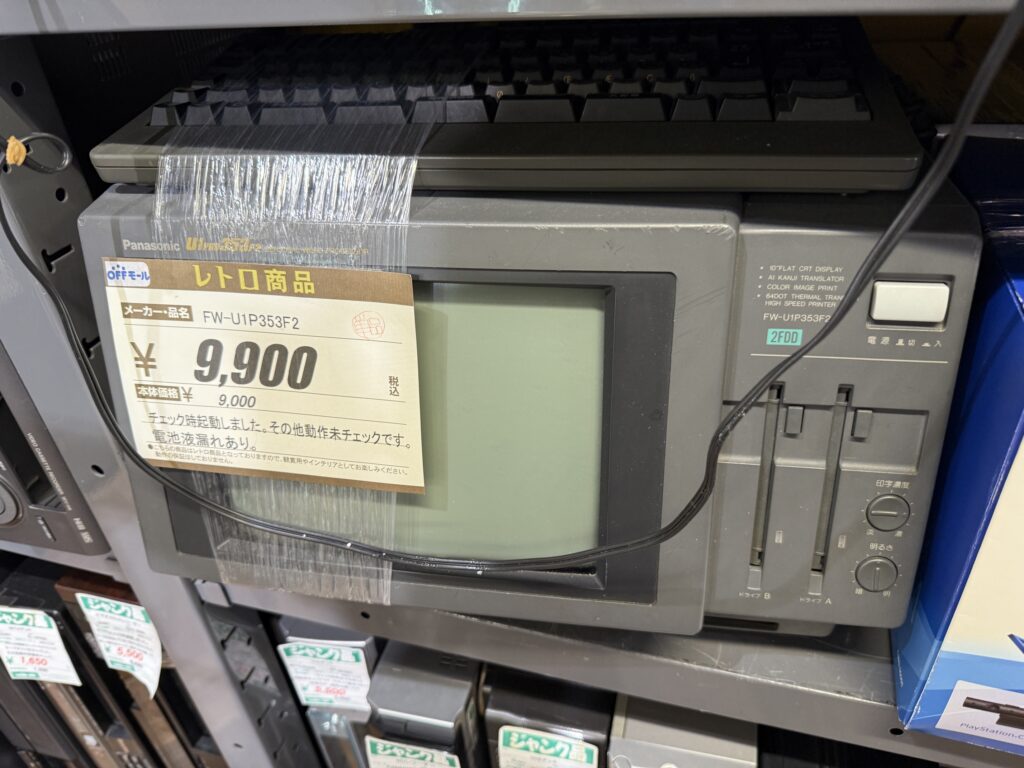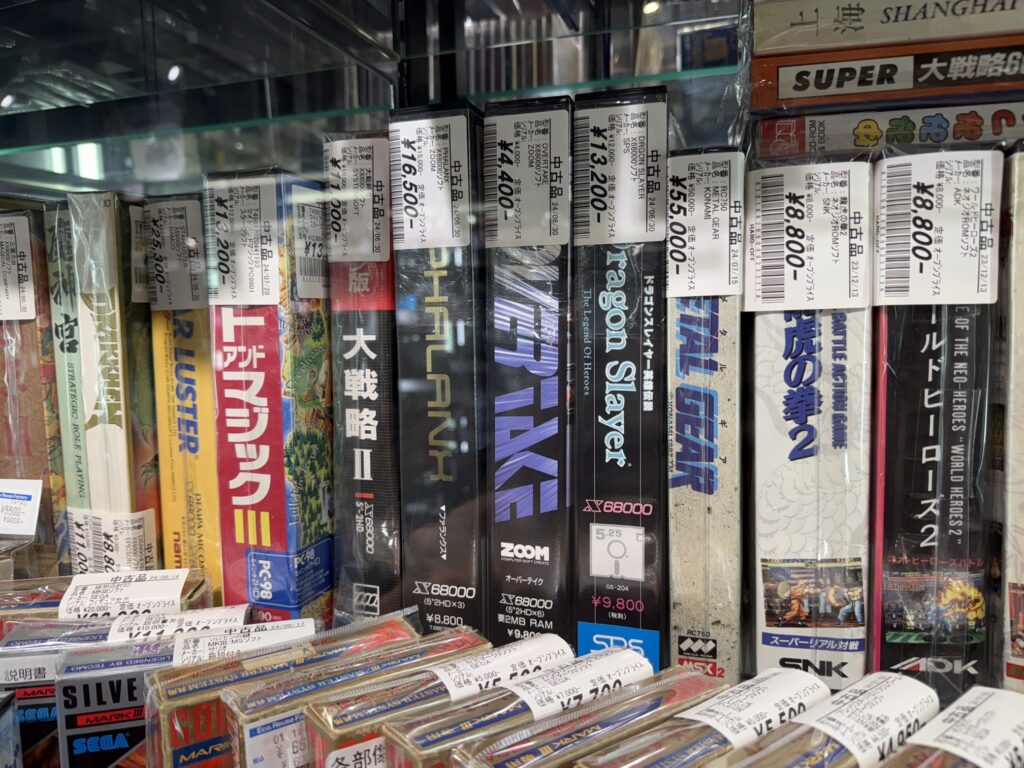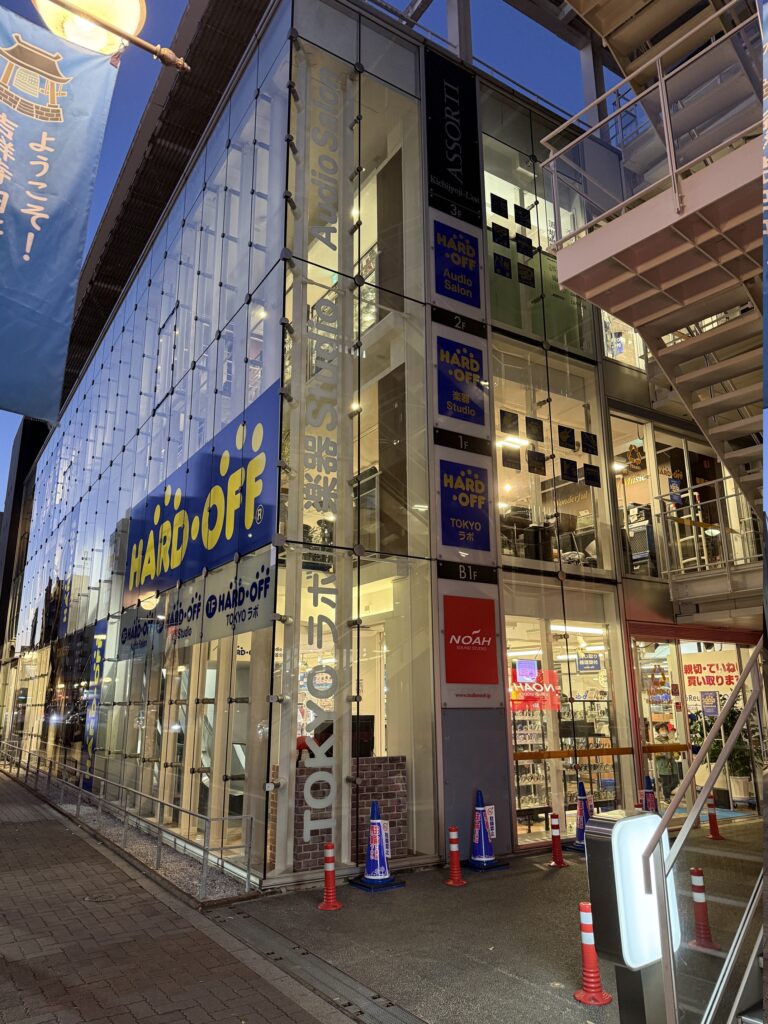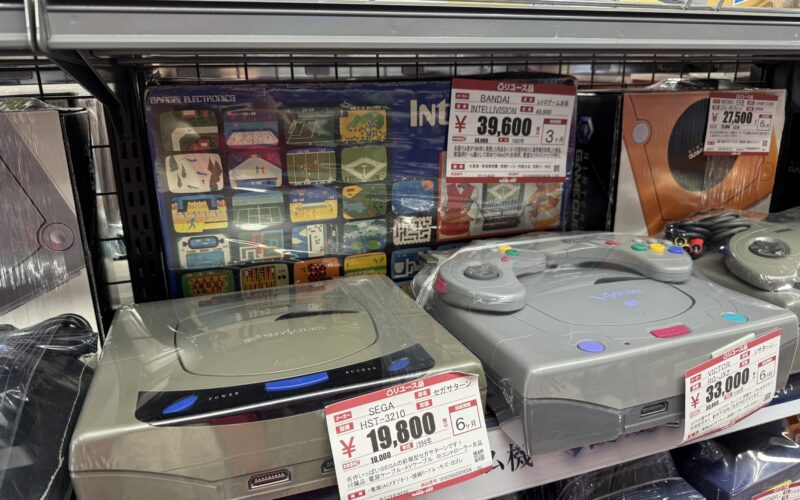Hard Off Kichijoji: The Game Museum
If you follow the English-language retro games in Japan bubble, you’ll find plenty of videos recommending stores like Hard Off Kichijoji to get cheap games.
But Hard Off is a business and not a charity – and whoever runs a store will notice the droves of people coming into a store and adjust prices accordingly. Some stores only have great prices during their opening and then double or triple them. YouTubers meanwhile move to more and more remote destinations.
Hard Off Kichijoji was at one time one of those cheap destinations. This is evident in the reviews of visitors complaining about how prices have been raised dramatically.
A Museum!
Kichijoji would be a place to skip then, but I was in the region anyway. So I walked a bit from the station to the Off store. This is actually a location with multiple Off stores, including Mode Off (fashion) and Liquor Off (alcohol). Let’s skip those and head straight to Hard Off.
This store evokes a feeling of the past, when the shelves were stacked with complete games in excellent condition. NES (Famicom) and SNES (Super Famicom) games dominate. I saw a copy of Heisei Inu Monogatari Bow: Pop and Smash, a mix between tennis and Arkanoid based on a manga. You can play as a dog which is why I included it in my article about dog games for RETURN magazine.
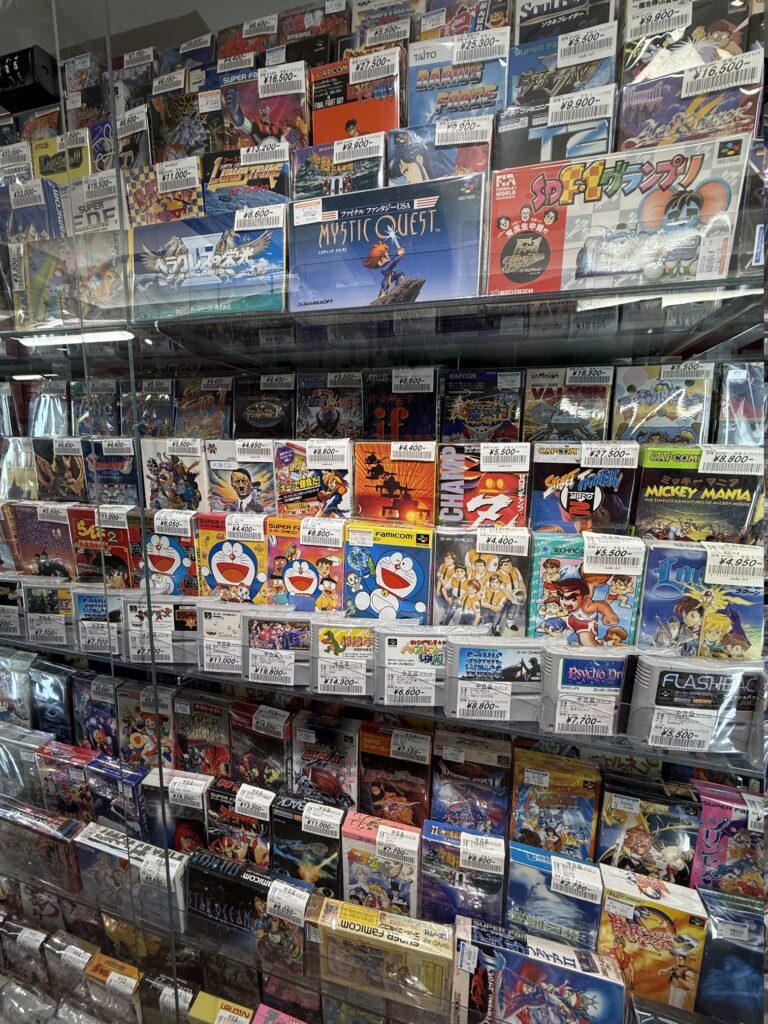

At least for this game, the price was similar to what people would ask on eBay.
Hidden among the Famicom dominance are the computer games. Hard Off Kichijoji had games for the PC-98, X68000 and MSX computers.
Retro Hardware at Hard Off Kichijoji
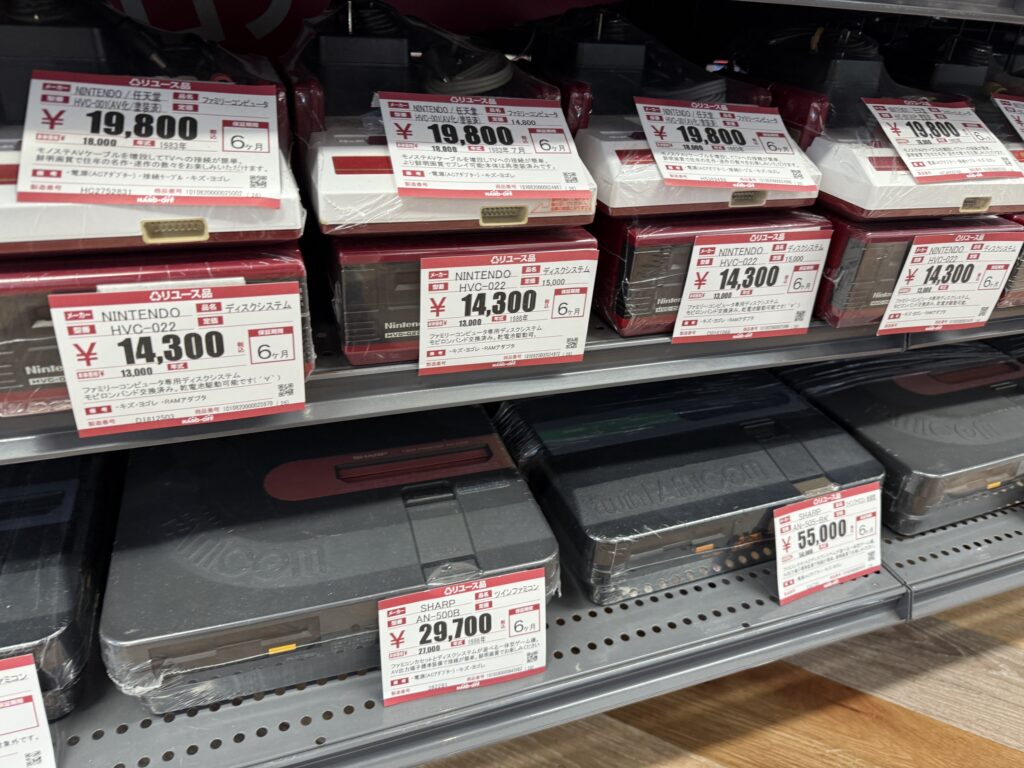
I had a similar feeling when I looked at their selection of game systems. It’s vast – it felt like returning to Akihabara in 2004, when you had shelves upon shelves stacked with Famicoms, Famicom disk drives, Super Famicoms and Dreamcasts. Prices were different of course, that sticker with a five to six digit yen number is a reminder that it’s 2024.
But this store has many systems, often in excellent condition: Rows of Nintendo 64, Sharp’s Twin Famicom, the original Famicom, Super Famicom, Mega Drive, Saturn etc. There’s also plenty of portables like PlayStation Vita, Nintendo DS, GameBoy Advance, the original GameBoy, Bandai WonderSean and others.
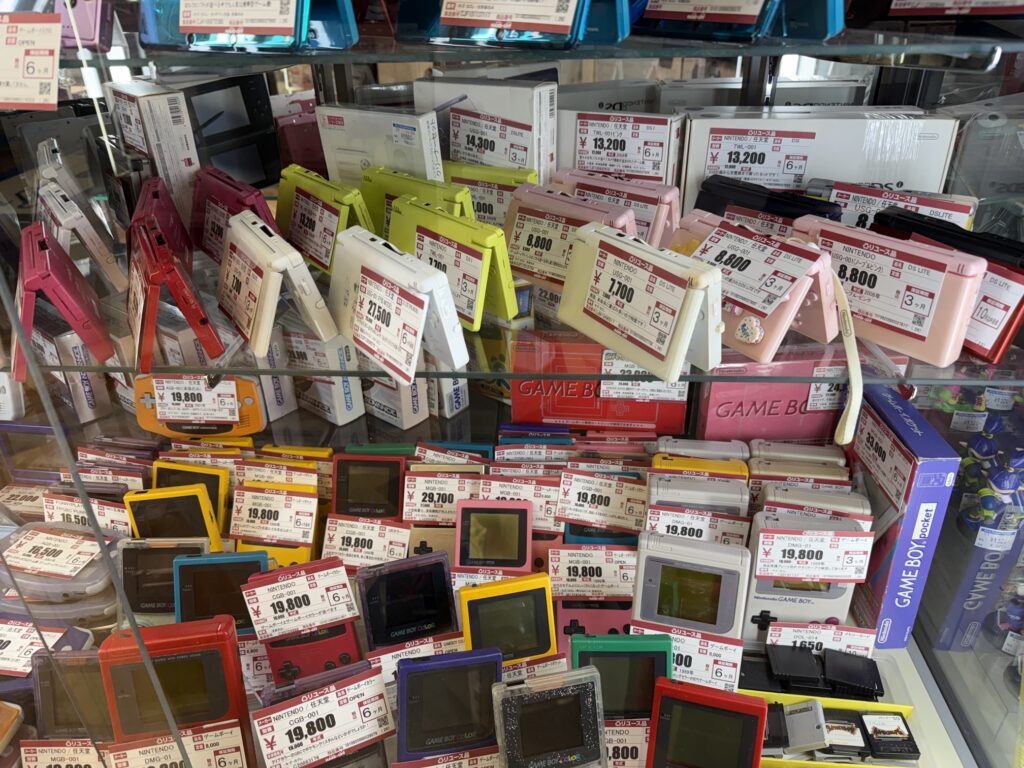
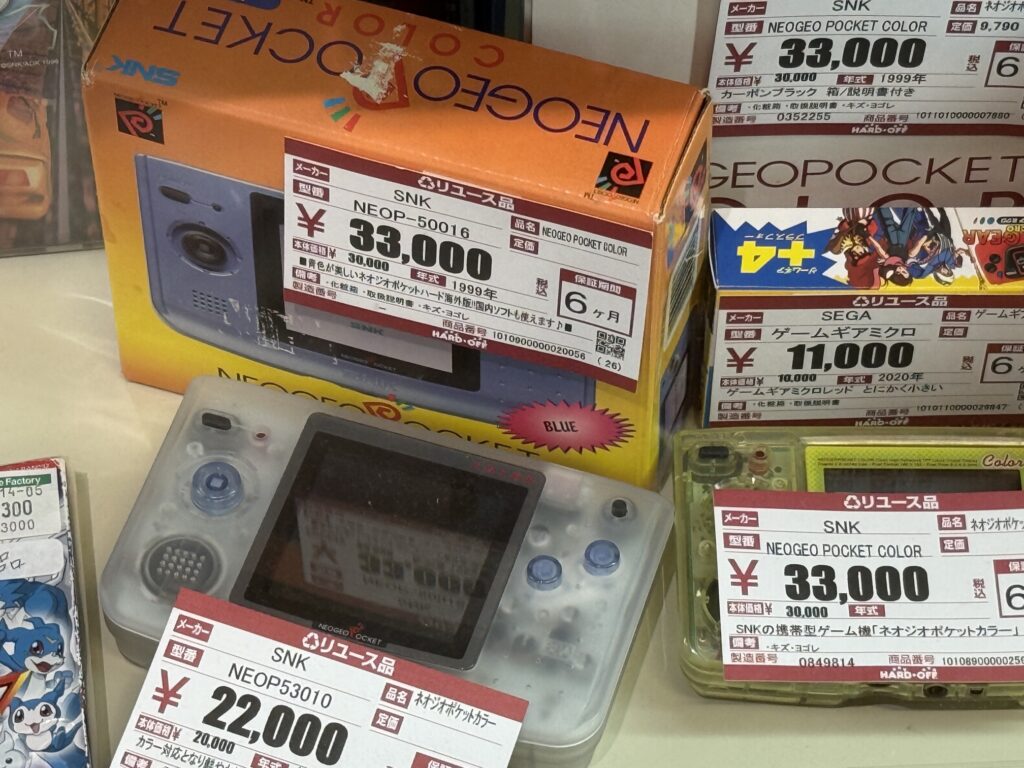
Rare and even rarer
As a frequent visitor to computer museums, I’ll look for systems I might not see somewhere else. Intellivision, Lynx and Vectrex are obscure for the Japanese, not so much for people coming from Europe or the U.S.
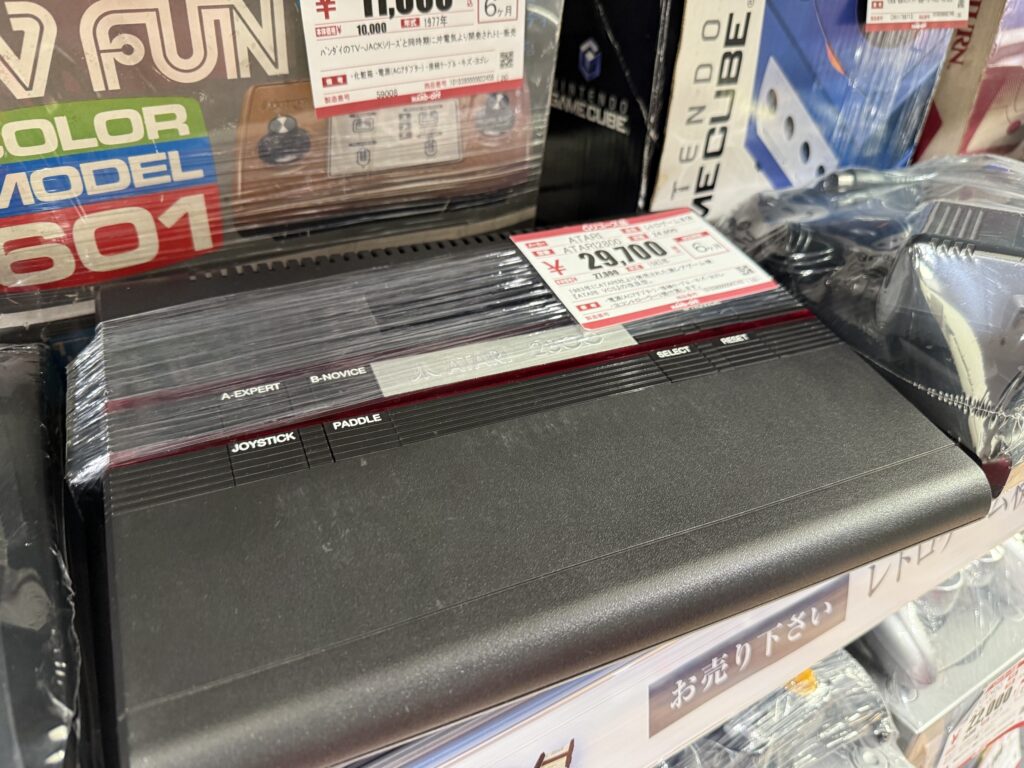
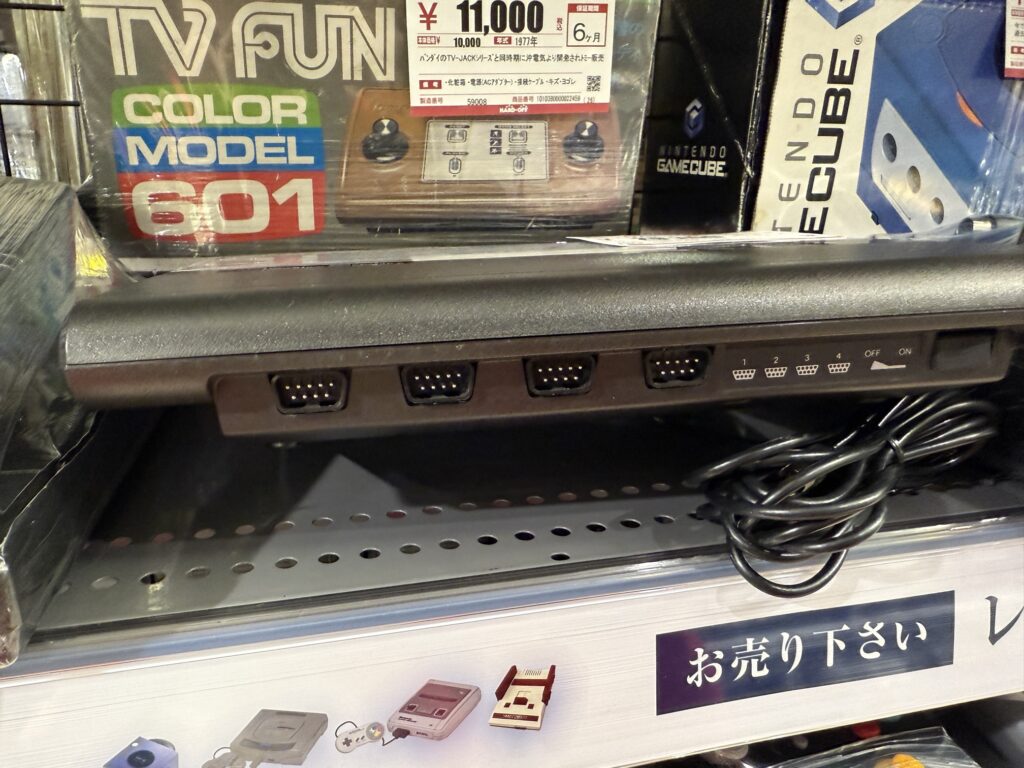
The first interesting piece was the Atari 2800, Atari’s ill-fated attempt to enter the Japanese market. The case is similiar to the 7800, but inside is a 2600 – essentially technology from 1977 in a console released in 1983. Besides the case, there are two main differences to models released in the west: four controller ports and and an exclusive controller. The 2800 controller combines a joystick with a paddle controller. The store didn’t have the controller unfortunately.

Then I found the Sharp CZ-830C or better known as the X1 Twin. This was the last model of the X1 series of computers. The X1 Twin was the odd member of the family, as it integrated NEC’s PC-Engine (slot covered by the price tag), combining two systems. Unfortunately, these two systems weren’t integrated well and the PC-Engine part couldn’t use the CD-ROM attachment of the PC-Engine console.
The rarest piece was a Tomy Timetronic GT-2000. This item was priced at 550000 Yen and there’s almost no information online. According to the description text on the price tag, it was used as an entertainment device in ryokans and hotels (hence the coin slot) and featured games from the Tomy Pyuta, better known in the west as the Tomy Tutor.
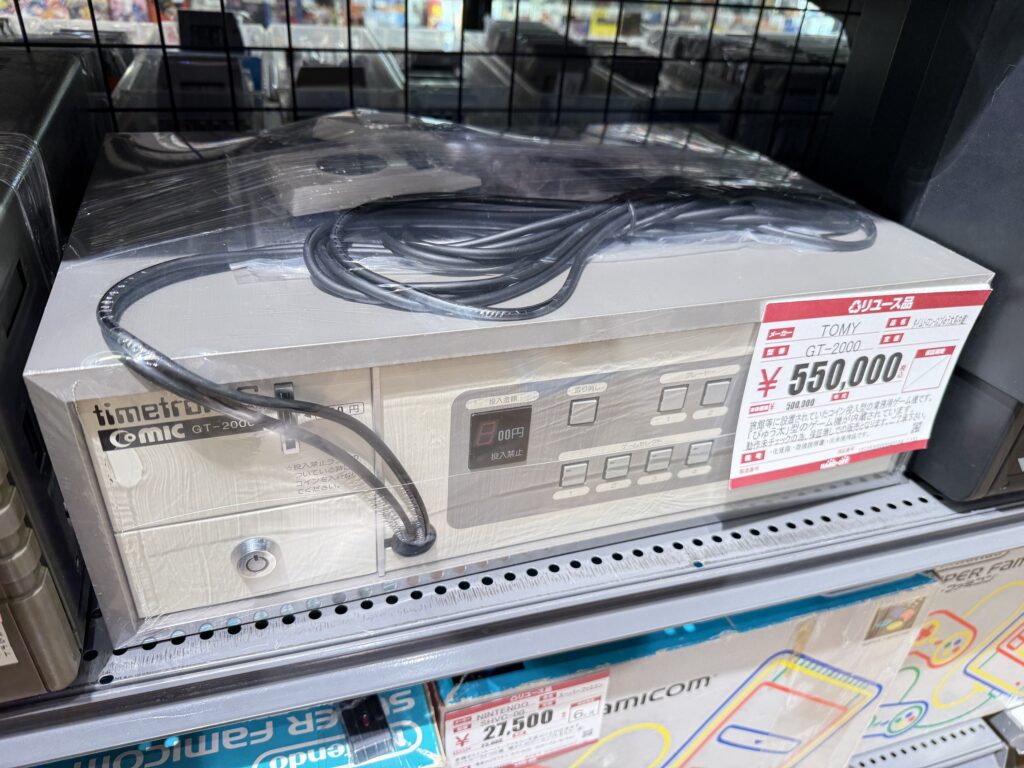
Junk and other sections
If you are savvy with fixing stuff, you’ll probably gravitate towards the junk section which is well stacked with the common video game systems. Those systems are yellowed, untested or not working. Hard Off makes upcycling suggestions. I don’t think that using cartridge-based systems as tissue dispensers or the PlayStation as a clock are very creative…
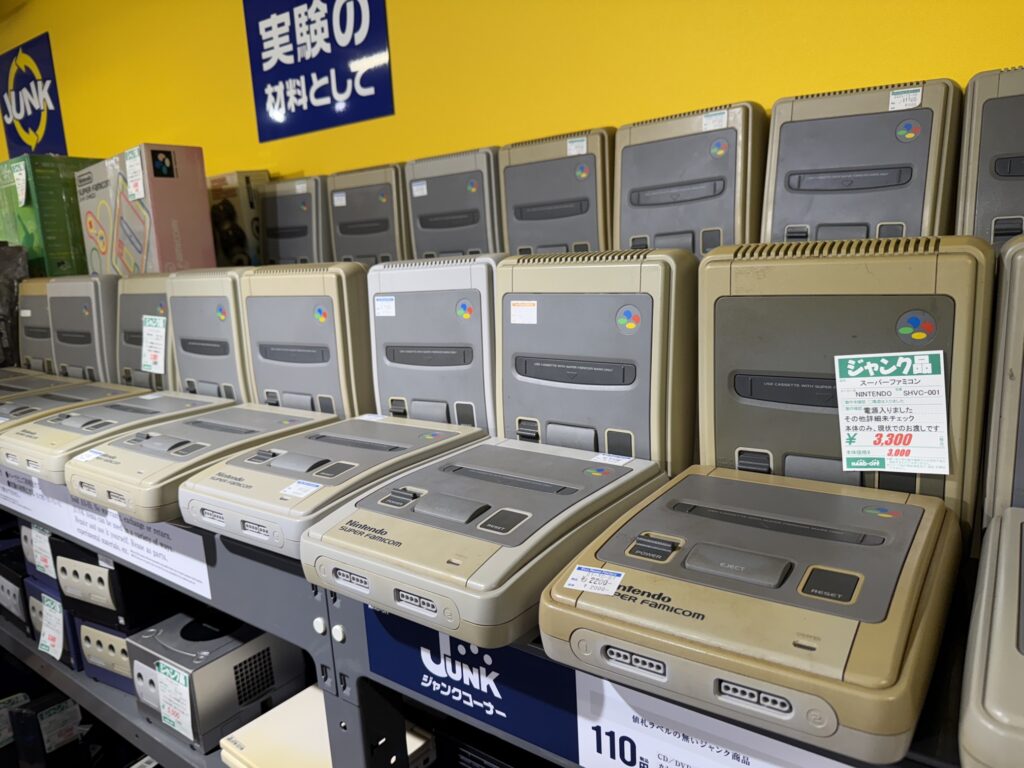
Is Hard Off Kichijoji a good museum?
Almost! Those huge price stickers unfortunately cover too much of the machine, but I got to see some rare systems that I’ll probably not see again. Despite the legacy of Japanese systems, computer museums aren’t common here.
As for the prices, it depends. The price for the Super Famicom Mini looked inflated to me, because I recently picked up one at a nearby Hard Off for a third of the price. But in that case I was just lucky. I’m also not driving around the country to search for deals. Is it still a deal if you save 3000 Yen at a remote Hard Off, but pay 4000 Yen to get there?
